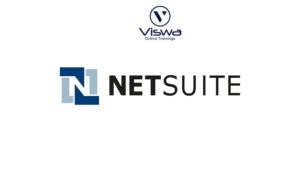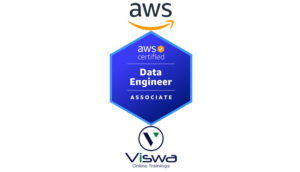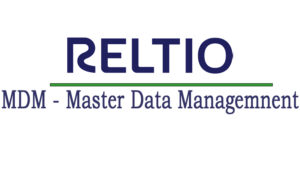AWS Redshift Certification Training
One of the top providers of online IT training worldwide is VISWA Online Trainings. To assist beginners and working professionals in achieving their career objectives and taking advantage of our best services, We provide a wide range of courses and online training.
Learners : 1080
Duration : 30 Days
About Course
My AWS Redshift is a petabyte-scale cloud-based data warehouse software intended for massive data set storage and analysis. It is fully managed. Additionally, it is utilized to carry out extensive database migrations. Users may access data in real-time because of Redshift’s column-oriented database’s ability to connect to SQL-based clients and business intelligence tools. Based on Redshift, it offers quick performance and effective querying to assist teams in producing reliable business analyses and choices. Enrol today to earn your certification.
AWS Redshift Training Course Syllabus
✔ Amazon Web Services Stack
✔ Introduction to Amazon DATABASE
✔ AWS Redshift – Data Warehouse-as-a-Service
✔ Features
✔ Pricing
✔ Clusters
✔ Leader and Compute Nodes
✔ Node Slices
✔ Columnar Storage for performance
✔ Economics of Redshift
✔ Common Use cases
✔ Launch a new Redshift Cluster
✔ Modifying a Cluster – resize, showdown, delete, reboot.
✔ Security Groups.
✔ Parameter groups.
✔ Database Encryption.
✔ Backup and recovery – creating manual snapshots and automatic snapshots.
✔ Authorize access to Cluster
✔ Getting Information about Cluster Configuration.
✔ Database Audit Logging
✔ Install and configure client SQL tools using
✔ Create Database, Users, user groups, permissions, and access controls.
✔ Connect to Redshift Cluster
✔ Load sample data into the cluster
✔ Create and test queries against the data
✔ Analyzing cluster Performance data
✔ Analyze query execution
✔ Creating Alarm and working with performance metrics
✔ DDL SQL – Creating Tables, Alter tables, Drop tables.
✔ LIMITATIONS and what is implemented differently.
✔ Selecting distribution Style and distribution keys.
✔ Selecting Sort Key.
✔ Choose best Distribution key covering various use cases
✔ Choosing best sort keys covering various use cases.
✔ Choosing a column compression type.
✔ Define constraints
✔ Using Copy to Load data
✔ Loading data from S3
✔ Using a Manifest to Specify Data Files
✔ Loading Compressed Files
✔ Loading Fixed-Width Data
✔ Insert, Select, Update, Delete
✔ Deep Copy
✔ System Tables for Troubleshooting Data Loads
✔ Unloading Data to Amazon S3
✔ Unloading Data in Delimited or Fixed-Width Format
✔ Reloading Unloaded Data
✔ Query Processing
✔ Query Planning and Execution Workflow
✔ Reviewing Query Plan Steps
✔ Query Plan
✔ Factors Affecting Query Performance
✔ Analyzing and Improving Queries
✔ Query Analysis Workflow
✔ Reviewing Query Alerts
✔ Analyzing the Query Plan
✔ Analyzing the Query Summary
✔ Improving Query Performance
✔ Diagnostic Queries for Query Tuning
✔ Implementing Workload Management
✔ Defining Query Queues
✔ Modifying the WLM Configuration
✔ WLM Queue Assignment Rules
✔ Assigning Queries to QueuesDynamic and Static Properties
✔ Monitoring Workload Management
✔ Configuring WLM Queues to Improve Query Processing
✔ Troubleshooting Queries
✔ Building Admin queries from system tables to analyze performance.
✔ Migration of Existing BI Systems to Redshift
✔ Build custom ETL and/or ELT framework from an OLTP db to Redshift
✔ Limitations and Best Practices for Redshift Data warehouse implementation.
| Live Instructor Based Training With Software |
| Lifetime access and 24×7 support |
| Certification Oriented content |
| Hands-On complete Real-time training |
| Get a certificate on course completion |
| Flexible Schedules |
| Live Recorded Videos Access |
| Study Material Provided |
AWS Redshift Training - Upcoming Batches
7th NOV 2022
8 AM IST
Coming Soon
AM IST
5th NOV 2022
8 AM IST
Coming Soon
AM IST
Don't find suitable time ?
CHOOSE YOUR OWN COMFORTABLE LEARNING EXPERIENCE
Live Virtual Training
-
Schedule your sessions at your comfortable timings.
-
Instructor-led training, Real-time projects
-
Certification Guidance.
Self-Paced Learning
-
Complete set of live-online training sessions recorded videos.
-
Learn technology at your own pace.
-
Get access for lifetime.
Corporate Training
-
Learn As A Full Day Schedule With Discussions, Exercises,
-
Practical Use Cases
-
Design Your Own Syllabus Based
AWS Redshift Training FAQ'S
The fully managed big data warehouse service Amazon Web Service (AWS) Redshift is fast and powerful enough to process and manage data in the exabyte range. By the business ParAccel (later bought by Actian), which handles large-scale data sets and database migrations, Redshift was created. It offers a cost-effective and effective data solution using massive parallel processing (MPP) technology. Redshift’s most well-known application is for gathering the most recent business and consumer insight.
The major benefits provided by AWS Redshift include:
In-built security with end-to-end encryption.
Multiple query support that provides significant query speed upgrades.
It provides an easy-to-use platform that is similar to MySQL and provides the usage of PostgreSQL, ODBC, and JDBC.
It offers Automated backup and fast scaling with fewer complications.
It is a cost-effective warehousing technique.
The extraction and loading of CSV (Comma Separated Values) files is made easier by AWS Data Pipeline. For CSV loading, AWS Data Pipelines relieves the strain of assembling a difficult ETL solution. It provides template activities to efficiently complete DML (data manipulation) operations.
To load the CSV file, we must copy the CSV data from the host source and paste that into Redshift via RedshiftCopyActivity.
Get ahead in your career by learning AWS RedShift through VISWA Online Trainings
The ‘Show table’ keyword lists the tables in Amazon Redshift. It displays the table schema along with table and column constraints. Syntax:
SHOW TABLE [schema.]table_name
The simplest and fastest cloud data warehouse is Amazon Redshift, which offers three times better pricing performance than competing data warehouses. Redshift provides businesses with datasets ranging in size from gigabytes to exabytes with quick query performance at a comparatively low cost.
Reviews
 Vishnu Gadipudi2023-08-20I Enrolled in VISWA Online Trainings for IBM Integration BUS course . Recently I Completed IBM Integration BUS Batch. It was Really Awesome Experience. Best Place To Learn , Experienced Trainer, Gives Us High Level Knowledge....
Vishnu Gadipudi2023-08-20I Enrolled in VISWA Online Trainings for IBM Integration BUS course . Recently I Completed IBM Integration BUS Batch. It was Really Awesome Experience. Best Place To Learn , Experienced Trainer, Gives Us High Level Knowledge.... Navya Biradavolu2023-08-20I was enrolled for looker Bl Tool,it was amazing experience . especially soft skill batch is one of my favourite batch . overall learning process is quite impressive.
Navya Biradavolu2023-08-20I was enrolled for looker Bl Tool,it was amazing experience . especially soft skill batch is one of my favourite batch . overall learning process is quite impressive. Indla sneha2023-08-20I have joined I have joined VISWA Online TRAININGS for Java full stack course and i have completed Advance Java module. I had a good knowledge of Hibernate, spring,spring boot,spring MVC. Tutor has knowledge in depth and is supportive. Srinadh sir solved all our doubts....
Indla sneha2023-08-20I have joined I have joined VISWA Online TRAININGS for Java full stack course and i have completed Advance Java module. I had a good knowledge of Hibernate, spring,spring boot,spring MVC. Tutor has knowledge in depth and is supportive. Srinadh sir solved all our doubts.... bindu hima2023-08-20I am recently completed Talend course and trainer is Rajendra very professional and helpful. All the doubts were solved in a precise manner.
bindu hima2023-08-20I am recently completed Talend course and trainer is Rajendra very professional and helpful. All the doubts were solved in a precise manner. Tarunasree Gowra2023-08-20"I truly enjoyed this course." Chaitanya sir fantastic-very knowledgeable. Sir give us very informative and clear instruction on how to achieve the goal. Thank you!
Tarunasree Gowra2023-08-20"I truly enjoyed this course." Chaitanya sir fantastic-very knowledgeable. Sir give us very informative and clear instruction on how to achieve the goal. Thank you! Tejaswini Kommu2023-08-20Overall Linux Admin sessions batch was very good. Mr. RAM Krishna teaching was very helpful to remind our basic concepts in linux & networking.
Tejaswini Kommu2023-08-20Overall Linux Admin sessions batch was very good. Mr. RAM Krishna teaching was very helpful to remind our basic concepts in linux & networking. Gopanaboina Mounika2023-08-20It was great learning with such a great and experienced staff. Praveen Sir (Oracle EPM Cloud - FCCS) was very helpful and operations team also very helpful in solving any minor problems students go through process.
Gopanaboina Mounika2023-08-20It was great learning with such a great and experienced staff. Praveen Sir (Oracle EPM Cloud - FCCS) was very helpful and operations team also very helpful in solving any minor problems students go through process. Jyothi Gutlapalli2023-08-20I like to share my experience which provide lots of courses and one of those I recently completed my Salesforce BA Course and I like to tell you it was a great experience and my knowledge and confidence is really boosted after completing this course.
Jyothi Gutlapalli2023-08-20I like to share my experience which provide lots of courses and one of those I recently completed my Salesforce BA Course and I like to tell you it was a great experience and my knowledge and confidence is really boosted after completing this course. Harshibandi2023-08-20Good experience and great learning platform for Hyperion Essbase and Planning. The faculty is also well trained and soft spoken.
Harshibandi2023-08-20Good experience and great learning platform for Hyperion Essbase and Planning. The faculty is also well trained and soft spoken. Chaitu Viswa2023-08-20It was very good session for QlikView. I would like to thank to teacher Mr.Chandu for providing guidance for the required modules. Thanks VISWA Team for giving apportunity to leran new skills.
Chaitu Viswa2023-08-20It was very good session for QlikView. I would like to thank to teacher Mr.Chandu for providing guidance for the required modules. Thanks VISWA Team for giving apportunity to leran new skills.




